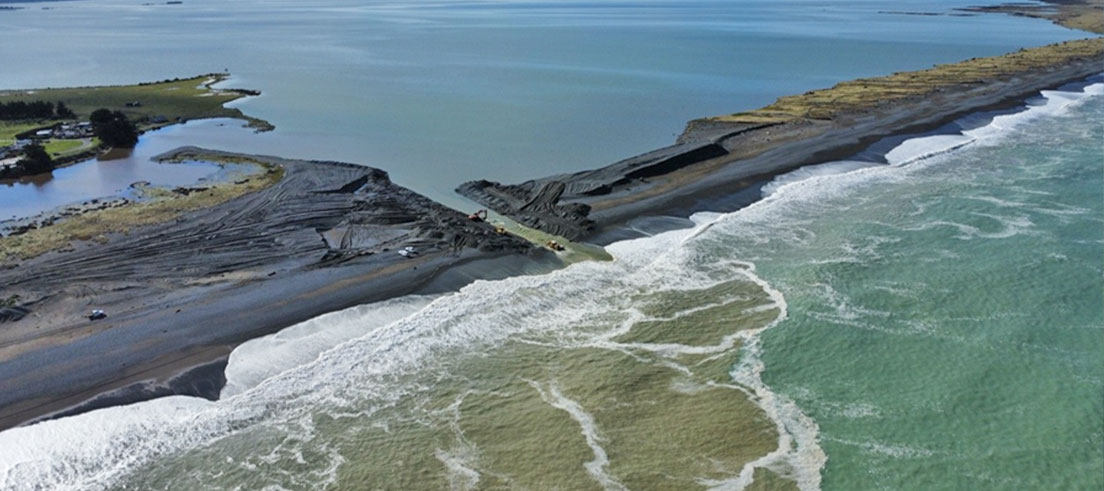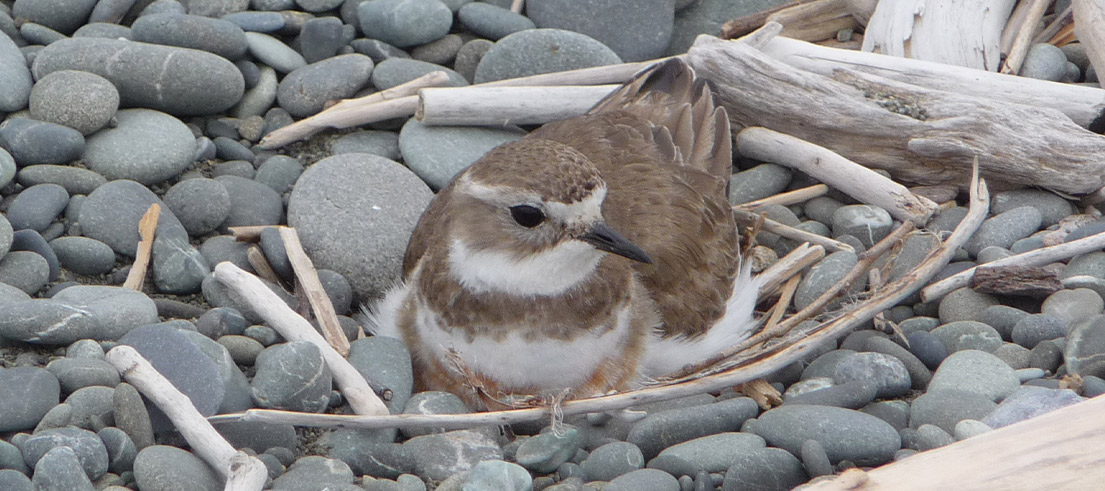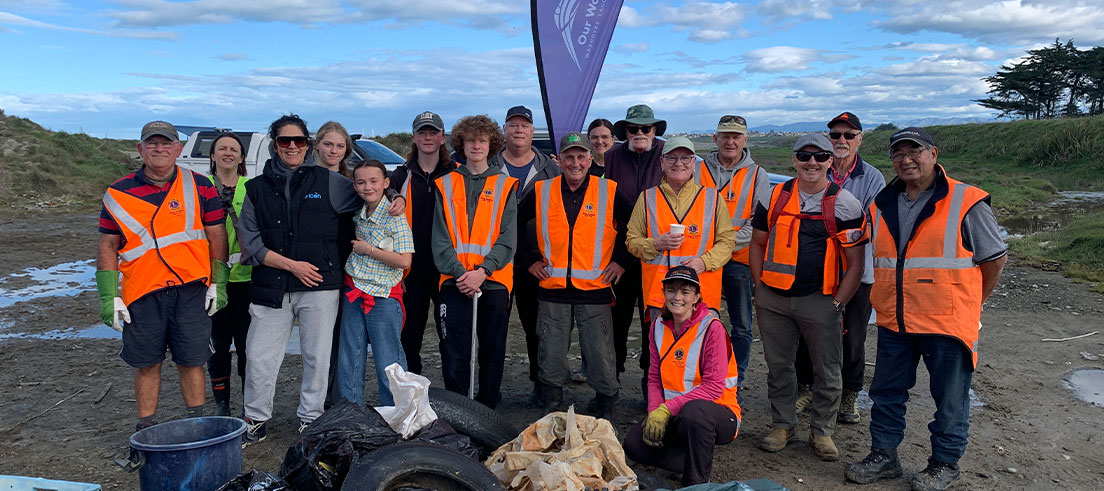Source: Fire and Emergency New Zealand
First Fast-track expert panels established
Source: NZ Music Month takes to the streets
Infrastructure Minister Chris Bishop and Regional Development Minister Shane Jones have welcomed the formation of the first two Fast-track expert panels.
“At this year’s Infrastructure Investment Summit we announced that the first project applications had been accepted by the Environmental Protection Authority (EPA),” Mr Bishop says.
“Judge Borthwick, the Panel Convener, and Helen Atkins, Associate Panel Convener, have now appointed expert panels to assess the Maitahi Village project and Delmore project applications respectively. These panels will commence their work on Monday 12th of May.
“Maitahi Village is a retirement village development in Nelson of around 180 residential dwellings (50 being Iwi-led housing), a commercial centre, and a retirement village with approximately 194 townhouses and 36 in-care facility units, and Delmore is an Auckland project of approximately 1,250 residential units, including features such as parks.
“Each expert panel will assess the project, decide whether to consent it, and apply any relevant conditions. Final decisions are expected for these applications by the 12th of September.
“The expert panels include members with technical expertise relevant to the project and expertise in environmental matters.
“This Government is serious about growing our economy, and doing its part to make infrastructure and housing quicker, easier, and cheaper to build in New Zealand. I am pleased to see the formation of these panels and look forward to watching the process move forward.”
Notes to editor:
More details on the applications can be found here: www.fasttrack.govt.nz
Maitahi Village (Nelson):
Development of approximately 180 residential dwellings (50 to be Ngāti Koata iwi-led housing), a commercial centre, and a retirement village (approximately 194 townhouses, 36 in-care facility units, a clubhouse, and a pavilion).
Maitahi Village Expert Panel:
Honourable Lyn Stevens KC (chair)
Andrew Whaley
Glenice Paine
Sam Flewellen
Delmore (Auckland):
Subdivision and development of approximately 1,250 residential dwellings and associated features such as parks, including delivery of the State Highway 1 Grand Drive interchange and Wainui area connection.
Delmore Expert Panel:
Helen Atkins (Chair)
Lisa Mein
Nigel Mark-Brown
Safe rail bridges coming for Glen Innes, Takaanini and Te Mahia
Source: Secondary teachers question rationale for changes to relationship education guidelines
Three Auckland train stations where there have been dozens of near misses between pedestrians and trains during the past decade will have their pedestrian level crossings replaced by modern, accessible overbridges, Auckland Transport (AT) says.
New pedestrian overbridges at Glen Innes, Takaanini and Te Mahia stations will improve safety and support more frequent and reliable train services when the City Rail Link opens.
The Government and Auckland Council have brought forward funding to allow construction of the three pedestrian bridges to be fast-tracked, with work starting at Labour Weekend when the rail network is closed and continuing during the summer rail closure.
From this week, AT is asking for feedback on the proposed bridge designs for Glen Innes, Takaanini and Te Mahia stations.
Local boards onboard with plan to improve safety in their communities
Maungakiekie-Tāmaki Local Board Chair Maria Meredith says it will be great to have safer access for the Glen Innes community.
“The City Rail Link will enable more efficient travel times from the Glen Innes station, but more importantly, the removal of the level crossing will also enable a far safer environment,” she says.
“By removing level crossing incidents, we’ll have a more efficient and safer network for all users.”
Papakura Local Board Chair Brent Catchpole says removing level crossings will help keep people moving safely.
“Many crossings were built back when there were less people and less trains operating,” he says.
“As our community grows and more people live near train lines, removing level crossings will help keep people moving safely with less congestion.”
Manurewa Local Board Chairperson Matt Winiata says he is pleased to see AT progressing plans for the replacement of the pedestrian level crossing at Te Mahia Station.
Te Mahia bridge design concept.
“The new pedestrian bridge will allow safer access to and from the station platform from both Great South Road and Ferguson Street,” he says.
“This follows significant investment by the Local Board in the Te Mahia pedestrian plaza, transforming a train station with a once uncertain future into a notable transport hub for the surrounding area.”
Safe rail bridges part of AT’s plan to get ready for the City Rail Link opening
Auckland Transport Director of Infrastructure and Place Murray Burt says the new pedestrian bridges will make it safer to access the stations and are part of a broader level crossing programme that will support more frequent and reliable train services when the City Rail Link opens.
“Every single incident at a level crossing has an impact that can be deadly or life-changing, taking a huge toll on train drivers and those who narrowly miss a collision,” Mr Burt says.
Mr Burt says these three level crossings have been prioritised for replacement with accessible overbridges because of how busy the rail network is through those areas.
“Takaanini and Te Mahia stations have been prioritised because that section of the Southern Line is the busiest on the Auckland rail network with a large number of freight and passenger trains,” Mr Burt says.
“Removing the level crossing at Glen Innes Station is needed because it is the last remaining level crossing on the Eastern Line, which will have trains every five minutes at peak after City Rail Link opens.”
Feedback wanted before AT finalises bridge designs
The designs for the three bridges have been developed to provide good access to the train stations, improve pedestrian safety, and to deliver value for money for ratepayers.
“We now want to hear feedback from our passengers and local communities about what the designs will mean for access, connection, and safety,” Mr Burt says.
This feedback will be used to finalise the bridge designs and to help with AT’s plans to integrate the bridges and station access into the wider neighbourhoods nearby.
About AT’s level crossings programme
-
Level crossings increase safety risks for pedestrians and people in vehicles and make travel time longer for both people travelling on trains and those wanting to cross the tracks.
-
Level crossings restrict train frequencies and have safety, productivity and accessibility implications on the road network, particularly when barrier arms need to be down longer.
-
AT, KiwiRail and NZTA are working together to remove or replace all remaining 42 level crossings in Auckland over the next 10-30 years.
-
The phasing of removals is driven by a range of factors including the frequency of trains, traffic delays, safety, available funding and future passenger growth in the years after City Rail Link opens.
-
Following the removal of crossings to support increased train frequencies when City Rail Link opens in 2026 the priority order of removals is:
-
Takanini – three new road bridges to replace level crossings. Funding has been confirmed and AT is beginning the detailed design, consenting, property acquisition and construction phase.
-
Inner Western Line and other high priority crossings on the Western Line from the 2030s when passenger numbers have grown.
-
Remaining Western Line crossings.
-
Southern Line Papakura to Pukekohe – aligned with KiwiRail’s four tracking.
-
Te Waihora/Lake Ellesmere open to the sea
Source: PISA results continue to show more to be done for equity in education
Te Waihora/Lake Ellesmere is open to the sea following a successful attempt to open the lake on Monday, 5 May.
Attempts to open the lake on Saturday, 3 May and again on Sunday, 4 May were unsuccessful due to persistent large sea swell.
Te Waihora/Lake Ellesmere is the largest lake in Waitaha/Canterbury and has no natural outlet to the sea. The lake is normally opened two to three times a year and closes naturally.
Openings are jointly managed by Ngāi Tahu and us and governed by the National Water Conservation Order and a suite of resource consents.
Conditions suitable for keeping the lake open
The cut made on Monday, 5 May remains open and is flowing well, although changing conditions could impact this.
“The sea is much calmer than it has been over the last week, which means the cut has developed well and scoured out from an initial width of 15 metres to 100 metres now”, says Leigh Griffiths, general manager hazards.
“While we can say the lake is open once we’ve made a connection to the sea, the cut can take a few days to scour out and fully develop. We consider the lake opening successful once the cut survives at least two high tides.”
The connection will be monitored over the next few days, and staff and machinery will remain onsite in case conditions change.
“Many things need to line up for an opening to be successful, including conditions set in the
National Water Conservation Order and the ability to safely mobilise people and machinery,” says Leigh.
How much does each opening cost?
The cost of each opening ranges from $20,000 to $200,000 depending on the amount of work. The operation is funded through targeted, works and services, and general rates. Central Plains Water Trust also contributes to the operation.
For more information, visit:
Community conservation brings native birds back to South Rakaia
Source: PISA results continue to show more to be done for equity in education
Ken said the older he got the more he noticed environmental decline, particularly the loss of biodiversity and it was a nice feeling to help regenerate the area and help restore birdlife.
Since retiring, he has become passionate about conservation and raising awareness about the indigenous biodiversity in the area.
“It’s not until you get involved in conservation that you find there’s so many people doing similar work. You might think you’re not doing much but together we’re actually doing quite a lot.”
The rest of the South Rakaia Hut holders, about 70 people based between Ashburton and Christchurch, have been providing funding to Ken to support his efforts.
Community gets behind conservation
The local community have also been getting behind the project by planting and maintaining hundreds of natives along the reserve and within the settlement.
As a result of the planting and trappings, more native birds have been spotted in the area which was surrounded by streams, wetlands, regenerated forests, and the ocean.
Ken said there were now about a dozen breeding pairs of korimako (bellbirds) who were there all year round and in the last 18 months, there had been two kererū (wood pigeon) as well as tui, bittern and a white heron who visited every so often.
“We’re seeing a lot more birdlife, and everyone is noticing it,” Ken said.
One of Ken’s biggest motivations was protecting the dotterels that nested on the beach. He hoped his trappings would ensure a successful breeding season, which was due to start in July.
“They nest right on the stones, so they are really a free feed for the weasels.”
To support Ken and the community’s conservation work, we have funded signs to help educate the community and visitors about the birds, and to make them aware of trappings in the area. The signs had been designed by Braided Rivers New Zealand.
Land management and biodiversity advisor Jess Cochrane said the signs showed pictures of all the different bird species to help visitors identify any they might see.
“We included the Māori and English names of each of the birds to encourage use of te reo Māori for our indigenous species,” Jess said.
Conservation work would continue in the area with the hope of one day eliminating the predators and encouraging more birds to call South Rakaia home.
Action gets underway at Waitarakao
Source: PISA results continue to show more to be done for equity in education
Waitarakao community beach clean-ups
Volunteers recently completed the project’s fourth beach clean-up.
Twenty volunteers took part in the beach clean-up.
- Six tyres and a road cone were removed.
- Fifteen bags of rubbish were collected.
The effort helped prevent pollution from entering the ocean or lagoon and harming wildlife.
Rural restoration work
Further inland, farmers in the catchment are working closely with our biodiversity advisors on restoration work on their land.
- streams are being fenced off and planted, aiming over time to improve water quality and habitat for native species like mudfish
- water quality is being improved
- and mudfish habitats are being nurtured back to health.
This work is being done with both the environment and future generations in mind.
A recent field day organised by local landowners and Living Landscapes, and supported by Our Waitarakao was a great day out and a fantastic opportunity for the 50 or so participants to share ideas and build relationships.
We thank Living Landscapes and landowners for inviting us along to share in such a positive event.
Community pest trapping
At the same time, community predator trapping initiatives are gaining momentum.
We’ve had a great response from businesses and residents in a target area around the lagoon who have volunteered to host traps and monitoring equipment, which will be distributed in the next few weeks.
This is to support the trapping work we’re doing in the lagoon, and to help prevent reinfestation of that wildlife refuge.
Our Waitarakao strategy – actions and projects
There’s lots more happening, including Timaru schools incorporating the lagoon and Our Waitarakao into their learning, and we’re progressing a crucial investigation that will support a blueprint for the future lagoon, as per the first objective of the strategy.
Our staff and project partners are working alongside the community, supporting practical action with a shared vision for a healthier, more resilient catchment.
What’s happening in Waitarakao is more than just environmental work—it’s a partnership between people and place.
Learn more about the
Our Waitarakao – actions and projects underway and how you can get involved.
Environment Canterbury © 2025
Retrieved: 10:52am, Thu 08 May 2025
ecan.govt.nz/get-involved/news-and-events/2025/action-gets-underway-at-waitarakao/
Wildlife law change a deep betrayal of public trust
Source: It’s time to fix the secondary teacher shortage
The Green Party is appalled by the Government’s use of urgency to rewrite the Wildlife Act–without consultation, without an impact statement, and in direct response to a court ruling in favour of protecting wildlife.
“The Government is rushing legislation through Parliament to make it easier to kill kiwi and other precious wildlife,” says Green Party co-leader and Conservation spokesperson, Marama Davidson.
“Our native taonga should be treasured. They connect us to our whenua and whakapapa, and form a critical component of our national identity.
“This law change comes directly off the back of a court ruling that found it was unlawful for the Department of Conservation (DOC) to permit developers to kill protected species.
“Rather than respecting that ruling, and learning from it, the Government is rewriting the Act to make that killing legal. It’s cynical, calculated, and utterly, utterly devastating.
“For the Minister of Conservation to say only days ago that nature is ‘part of our national identity, economy and way of life,’ then allow this legislation to bulldoze through the House is a disgrace.
“You can’t claim to value our biodiversity while forcing through law changes to make it easier to destroy it. This isn’t about protecting biodiversity—it’s about protecting profit and feeding corporate greed.
“When nature is only valued for its economic benefit, the outcome is inevitable: destruction. This Government has made it clear that when forced to choose between the interests of industry or the interests of the law, the public, and the environment, it will always choose the bulldozer.
“Our Green Budget will outline our bold vision for an Aotearoa that works with nature, not against it,” says Marama Davidson.
Wellington Police seize property for non-payment of fines in manner contrary to law
Source: Independent Police Conduct Authority
8 May 2025
The Independent Police Conduct Authority received four complaints concerning Wellington Police officers obtaining a warrant and seizing vehicles for unpaid fines in 2022 and 2023. Upon review, the Authority found common themes arose which continue to be relevant to current Police practice.
The complaints arose following the commencement of ‘Operation Cobalt’. As part of this operation, Police used their legal power to apply for warrants to seize property for unpaid fines, specifically for the purpose of disrupting gang activity. The practice then transitioned into general policing, where the seizures did not always relate to gang activity. However, outside of Operation Cobalt, Police had no policy or instructions regarding the execution of the warrants for unpaid fines.
In three of the four cases we reviewed, officers lacked understanding of what is required when executing the warrants and they neglected to demand payment prior to seizing the vehicle. In doing so, they failed to comply with the requirements stipulated in the Summary Proceedings Act 1957, thereby making the vehicle seizures unlawful.
In early 2024, after our investigation commenced, Police updated policy to include the necessary guidance. Officers are now required to have bailiffs present unless there is urgency and/or good reason for Police to execute the warrant as part of a major event operation or criminal investigation.
The Authority recommends that, if Police wish to execute warrants to seize property for unpaid fines without the presence of bailiffs as part of major event operations or criminal investigations, Police should provide officers with specific training in the legal requirements for executing warrants and ensure that these are adhered to.
The Authority also found that it was unnecessary and unreasonable for an officer to execute one of the warrants for unpaid fines during the early hours of the morning.


